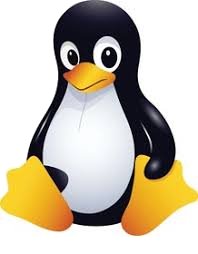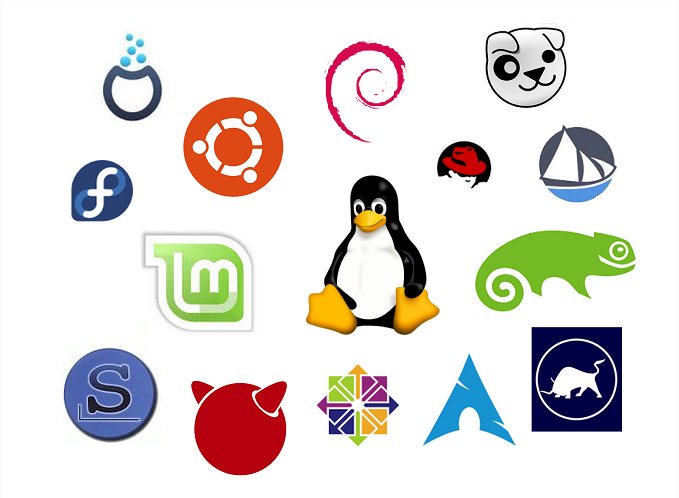Linux. The Alternative OS
Linux is a family of open-source Unix-like operating systems based on the Linux kernel, which was initially released in 1991 by Linus Torvalds. It's a free and widely used alternative to proprietary operating systems like Windows or macOS.
Linux is known for its flexibility, security, and customization options, and it's used in a vast range of applications, from personal computers to servers and even mobile devices. Linux's source code is publicly available, allowing anyone to examine, modify, and distribute it. Many different versions of Linux exist, each with its own unique features and user interface. Popular distributions include Ubuntu, Fedora, Debian, and Mint.
Linus Torvalds had wanted to call his invention "Freax", a portmanteau of "free", "freak", and "x" (as an allusion to Unix). During the start of his work on the system, some of the project's makefiles included the name "Freax" for about half a year. Torvalds considered the name "Linux" but dismissed it as too egotistical.
The Linux kernel is a widely ported operating system kernel, available for devices ranging from mobile phones to supercomputers; it runs on a highly diverse range of computer architectures, including ARM-based Android smartphones and the IBM Z mainframes. Specialized distributions and kernel forks exist for less mainstream architectures; for example, the ELKS kernel fork can run on Intel 8086 or Intel 80286 16-bit microprocessors, while the ?Clinux kernel fork may run on systems without a memory management unit. The kernel also runs on architectures that were only ever intended to use a proprietary manufacturer-created operating system, such as Macintosh computers (with PowerPC, Intel, and Apple silicon processors), PDAs, video game consoles, portable music players, and mobile phones.
Tux the penguin was not chosen as the Linux mascot by one specific person, but rather evolved through a process involving several individuals. Linus Torvalds, the creator of the Linux kernel, initially had the idea to use a penguin as a mascot after being bitten by one at a zoo, according to Wired. Alan Cox then suggested using an image found on an FTP site. The final design, which is now widely recognized, was created by Larry Ewing, who submitted it to a Linux logo contest. The name "Tux" was given to the penguin by James Hughes, who suggested it stood for "Torvalds Uni(X)," though it's also an abbreviation for "tuxedo,"

Main reasons to try Linux.
Open Source Nature: Linux's open-source nature means that the code is constantly reviewed and improved by a large community, leading to fewer security vulnerabilities and a more stable operating system.
Lower Risk of Malware: Compared to Windows, Linux is less targeted by malware, as many viruses are designed for the Windows ecosystem.
Reliability: Linux is known for its stability and reliability, with fewer system crashes and less need for frequent restarts.
Variety of Desktop Environments: Linux offers a wide range of customizable desktop environments like GNOME, KDE, and XFCE, allowing users to tailor their experience to their preferences.
Open Source Freedom: You own the OS, not Microsoft, meaning you have the freedom to install, modify, and redistribute the software as you wish.
Alternatives to Windows Software: Linux provides alternative software for common Windows applications, such as GIMP for Photoshop and LibreOffice for Microsoft Office. But there are still many software packages for Windows that have not been ported over. Plus the alternatives that there are may not be suitable yet for your needs.
Lightweight: Linux generally requires fewer system resources to run compared to Windows, resulting in faster performance, especially on older hardware.
Resource Efficiency: Linux can run efficiently on various hardware configurations, including older machines.
Linux uses the GNU/GPL License (currently version 3) which means this group of Operating Systems are Copyleft, rather than Copyright like Windows and Mac. See the text here. opens as a PDF in new tab
In plain simple English this means that:
1 - The Operating System is FREE.
2 - There is absolutely NO Warrenty whatsoever.
3 - You are free to modify, distribute, for home use, for commercial use, change the code to suit your own needs, re-distribute the changed code as long as the modified os stays under the GPL/GNU
4 - You are not permitted to sublicense. 5 - You can even charge for distributing the OS. IE I can download the ISO, burn it and charge my mate for the disc to cover my costs. 6 - If I modify and make the ISO available, I have to release it under the same GNU/GPL rules as I received, and allow any user access to the new modified code.